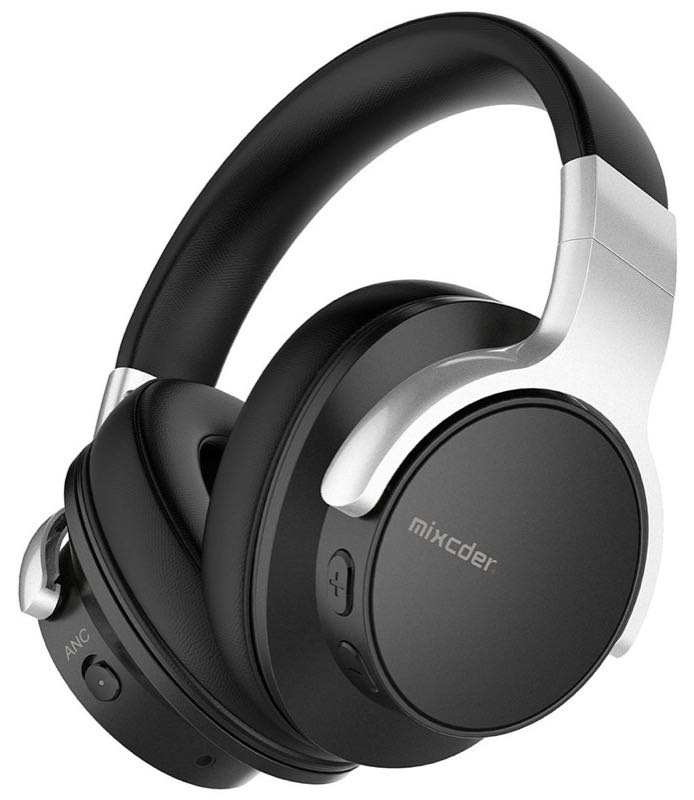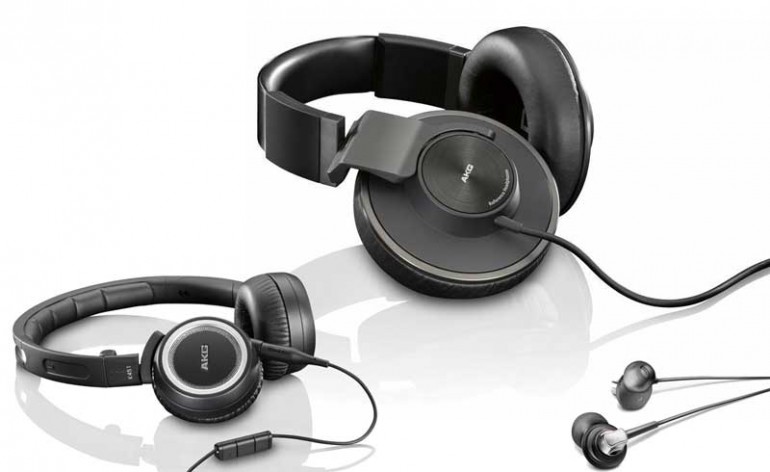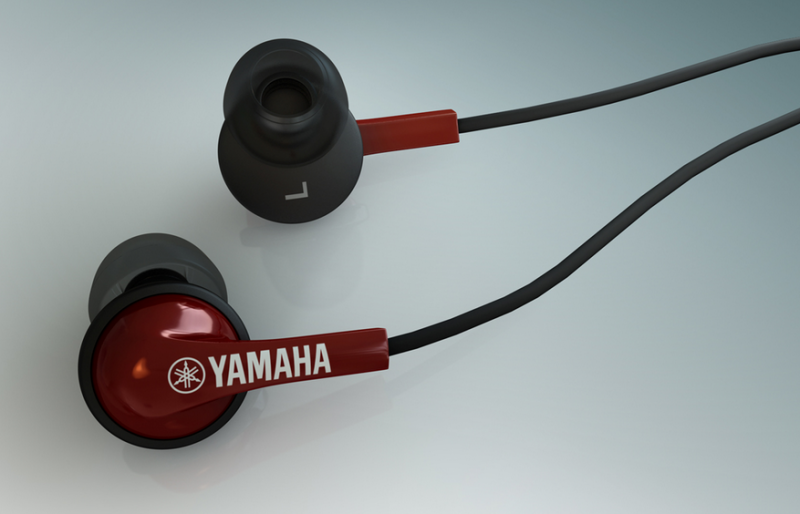In-ear vs Over-ear or On-ear Headphones
Headphones are like cars—you can really find your favorites and get locked in to what you like. For example, switching someone from over-ear headphones to on-ear headphones is like getting an SUV-driver to acquiesce to buying a new station wagon (remember those?). It’s not likely to happen. But you want to understand the differences between in-ear vs over-ear or on-ear headphones and the strength that each affords. I actually use all three styles depending upon what I’m doing. I think there’s a good reason you may want to consider the same.
Let’s pause before answering the in-ear vs over-ear or on-ear headphones question. I first want to walk you through the strengths and limitations of each format. We’ll do this by looking at portability, noise rejection, comfort, and sound.
In-ear Headphones
It’s only lately that I’ve been hearing the term “In-ear Headphones”. It’s like “earphones” or “earbuds” got a bad rap. Now the industry wants to let you know that those in-ear models it pushes are indeed a style of headphone. It’s more likely that Google got them to reconsider how people search for them online. Names aside, the typical in-ear headphone inserts into the ear canal. Sometimes, it sits just outside. Both styles provide sound in a very portable format. So let’s start there.
In-ear vs Over-ear Portability
In-ear headphones, or earphones, are, first and foremost, extremely portable. Because the drivers are so small and the enclosures not very large, they can be coiled up and stored in a case. Often, these cases come in the size of an ambitious wet-nap. You can put them right in your pocket. I don’t care how compact a pair of on-ear headphones claim to be, it’s not going to match the true portability of a good set of in-ears. For frequent travelers, the advantage of these earphones is obvious.
Noise Rejection
The concept of noise rejection headphones is an important one. Without it, you have outside noise competing with your tunes. That results in a couple of things. For starters, it’s dangerous, as you tend to crank up your music when the outside environment gets louder. That can damage your ears over time and it’s not a great solution.
Good dynamic range is best achieved by lowering outside noise, not increasing the volume of the listening material. In-ear headphones have the ability to reject outside noise without any fancy algorithms or noise cancellation devices. They simply can block out the noise by being properly inserted into the ear canal. Not all earphones are equally good at this. In fact, some earphones don’t insert into the canal at all. They don’t offer what I consider to be one of the biggest advantages to the in-ear style. Consider this as you shop.
Comfort
The biggest reason people cite for not preferring in-ear vs over-ear headphones is comfort. Some people have very sensitive ears. Anything inserted in the ear canal can cause some discomfort. I would say that if you’ve only ever tried cheap in-ear models then you may want to give this style another shot.
There are also solutions like foam ear tips (as opposed to the more common silicone). You can even get custom-formed solutions that require getting an earmold made at your local ENT or audiologist. Comfort varies from model to model. While some people will argue that ANY in-ear headphone causes discomfort, I would suggest that you try a few different styles of ear tips before drawing your own conclusions. Also, don’t forget that it is normal two use two different size tips for your different ears. If you find that one earphone is falling out, switch the tips. No one will know but you!
Sound
The sound quality of in-ear headphones can be just as good as any on-ear or over-ear model. They do tend to be a bit less open or airy, however. They are also very finicky, often producing very minimal bass unless inserted fully and properly. Even then, it’s tough to get frequency response as good as on-ear or over-ear headphones. The sound is directly injected into your ears. Any psychoacoustic environmental effects created by having space around your ears is lost and has to be done directly.
Some of the most accurate sound I’ve ever heard has been through the use of in-ear headphones. They can be tailored for precise sound reproduction without any concern for exterior environmental effects. They also exhibit excellent natural noise rejection.
On-ear Headphones
On-ear headphones (also called “Supra-aural” headphones) are popular because they can be made using lightweight materials. They present a nice portable alternative to bulkier over-ear models. They also give you that more natural “open” sound. This tends to let more of the environment in since they don’t completely close off the surroundings like (closed) over-ear models. They are also a bit more portable than full over-ear headphones and offer some comfort advantages as well.
Portability
If you want more portable headphones but don’t like in-ear models, then a nice, compact on-ear headphone is for you. You can also couple this with the fact that most on-ear models will deliver better bass. You don’t need to “properly insert them” in order to get the expected sound. Still, even folded, a pair of on-ear headphones is going to take up considerable space compared to in-ear headphones. While they can work for portability, their strengths lie elsewhere.
Noise Rejection
I often associate noise rejection with travel and portability—largely because I appreciate noise rejection the most on airplanes. With that said, I have found that on-ear models run the board in terms of noise rejection. Certainly, there are models with active noise cancellation. These will typically cost more (particularly if they sound good) and you’ll need to power them with a battery (typically a AAA cell or rechargeable via USB). For on-ear models with no active noise rejection, they can be tailored to produce natural isolation through a closed-back design. They can welcome the environment for those who prefer to have a more open phone and who aren’t planning on using them in the middle of a warehouse full of machinery.
Comfort
Comfort is a huge win for on-ear models. They don’t tend to “sweat” as much as over-ear phones, so they can be worn for extended periods of time. Still, if you have issues with anything being on your ear for long, you may want to really make sure you have a comfortable pair. Soft leather or soft synthetic materials do best for on-ear models in my opinion. Cheaper headphones in this category tend to cause minor ear fatigue over time. Since on-ear phones tend to weigh less than their over-ear counterparts, the headbands tend to be more comfortable as well, applying less direct pressure to the sensitive top of your head.
Sound
The quality sound potential of on-ear headphones is limited only by the skill and design of the manufacturer and headphone. These headphones have infinite sound potential and can range from basic, inexpensive models to more sophisticated audiophile headphones that boast full-range frequency response and hi-fidelity sound. Scratch-that, EVERYONE claims hi-fi sound, but with these phones, some models will actually deliver.
Over-ear Headphones

The last type of headphone in the in-ear vs over-ear is, of course, the over-ear headphones. Sometimes, we lovingly call these “Circumaural” headphones—at least guys in lab coats wearing propeller hats do. Over-ear headphones are popular because they can provide a comfortable fit, with advanced features like noise cancellation and hi-fidelity sound. Not all manufacturers who make over-ear headphones produce premium models, but there’s not much reason to make an over-ear product if you’re not serious about your headphones. With over-ear headphones, there’s a lot to like and a lot to watch out for.
Portability
These are not highly-portable headphones. That’s not to say that you can’t take them on a plane (I actually have a pair I take with me when I fly), but they won’t be as compact as a pair of over-ear phones or in-ears. Over-ear headphones are what sound engineers use and what you’ll find in many sound design rooms in Hollywood. They do a great job at providing natural isolation and you hear exactly what you need to, and very little else.
Noise Rejection
You get a lot of natural noise rejection with closed-back over-ear headphones, but this does vary from model to model. I have had some that allow quite a bit of noise in from the outside, and there are even models that are designed to be more open, allowing in more of the environment. The idea is that natural sound projects into your room and removing the tone and environment can create a less realistic experience. As they say, opinions are like…noses. Everybody has one.
Over-ear headphones are also the most popular platform for active noise cancellation (NC). These products reject outside noise by sampling the environment with a pair of external microphones and then playing back that noise out of phase. The inverted waveform effectively removes the noise, leaving you with your music—and a much greater dynamic range. These active systems are not without their challenges, however. I have yet to hear a pair of active noise-canceling headphones that sound better than reference headphones without that technology. Of course, that’s in a quiet room. In a noisy environment (like an airplane), the NC headphones will win every time.
Comfort
Over-ear headphones can be either extremely comfortable or extremely uncomfortable. You need to look for a thick, padded headband that will distribute the weight well across the top of your head. You also want ear cups that won’t sweat easily, so you can wear the phones longer. I have actually seen some synthetic materials that last longer and are more comfortable than real leather. Look for pliability and a design that doesn’t have all the weight focused at a single point on the top of your head. It’s unfortunate that the new wave in headphones is to encase the entire system in plastic. With these new designs I’m finding that the comfortability and flexibility is greatly hampered compared to the headphones of just a few years ago.
Sound
Some of the best sound you can get is possible through either closed- or open-back headphones. These are where the flagship or reference products are and where you will find all of the R&D that then trickles down to other products. If you want the most consistent, very best possible sound in a headphone, you are likely to end up with some sort of over-ear model.
Conclusion
This article doesn’t tell you exactly which headphones to buy, but it will hopefully help you understand what differentiates the models and why some people prefer one style of to another. Headphones are very particular, but don’t let your predispositions guide future decisions. You may be missing out, and lately, portable audio technology has advanced far enough that even I find myself being challenged by new products and new ways of producing sound. The best thing you can do is give a pair of headphones a listen.








I own a pair of Sony MDRZX750BN bluetooth headphones. They are the on ear style. After awhile, my outter ears begin to really hurt. Can you recommend an after market over the ear cushion pads?
That’s a tough one—I haven’t had much experience with those. I always wear review headphones for about a day to see how they feel (do they cause my ears to sweat, do they hurt, etc).
Hello Client.
Iam from India and need to buy headphones and need your help. I need budget headphones( 20 USD to 40 USD ) but the issue is i have a bit sensitive ears. so I want to listen at normal level or else it ill hurt my ears.The issue is as follows.
Public transport here (trains ) here are noisy. I want to listen to education videos while travelling and I do not want to increase the volume to prevent ear damage.
I have heard that noise cancellation “in ear ” phones are better for noise cancellation and so one does not need to increase the volume . and they will be good for noisy places like a train.
On the other hand, noise cancellation “on ear” headphones do not prevent much noise and one needs to increase the music volume. So which will be a better choice for me. In ear or on ear ?
Also I need earphones with mic and i want the mic to work on laptop and smartphone too. Iam considering on ear sony MDR-XB450ap or in ear audiotechina cor 150is……… so pls guide which one to choose with the e above conditions mentioned in above paragraphs
Very informative and helpful article. But I think, for me, it’s going to come down to price. I’m looking for the best price for the best headphones, I’ve tried very high price over the ear headphones and they were mind blowing but I can’t afford them, so I need to keep it below $100 so I need to know which is better in my price range.
Hey David, you could try the Cowin E-7 model. This one is a really good one. Regards!
Good info, I have to decide on which type to get
Pingback: How to Choose Headphones - ecoustics.com
I’ve always wondered about the debate between in-ear vs over-ear headphones. I usually tend to use in-ear headphones, for the simple fact that these headphones are smaller and easier to just throw in a pocket like you said. When portability isn’t an issue however, I love having bigger over-ear headphones to give me the better quality sound! For me the debate still remains, but I think that having both options keeps me happy!
In my experience:
Earbuds are awful. They leak more sound than headphones, they cause unbearable pain after just an hour of use, and all sound quality goes out the window. I would never recommend these to anyone. If I want awareness of my surroundings (at work for example), I just unplug one ear.
Supra-aurals are incredibly comfortable. Sound quality isn’t as good as circum-aurals, but good enough for me. But because I wear glasses, headphones cause ear pain after prolonged use (up to several hours, depending on the cushion foam type).
IEMs are the best for me. I’m not much into bass, but good IEMs can still deliver a good dose. The sound isolation and clarity is unmatched by the other types, and they usually come significantly cheaper. With good foam tips I can go to sleep wearing a pair of IEMs and not have any pain next morning, though I wouldn’t recommend it if you have an expensive pair. That leads to the only problem with IEMs. They’re just not as durable. The longest I’ve had a working pair for was 2 years I think. But there are plenty of great brands/models you can buy for under $50 and still have amazing sound.
For foam tips I buy foam plugs, snip them in half and use a soldering iron to melt a hole through. Pretty sketchy but very effective. You can buy them from online or get custom tips made of silicon but I’m not that big of an audiophile to invest in those.
What about AXUM? finally, someone is making wireless headphones for RUNNERS!!!! and not just another gaming/Netflix earbuds… to be honest, I really doubt that there’s a better pair of this completely wireless earbuds – can’t wait to get mine https://goo.gl/RT6t6p
I’ve always used the Jabra sport coach (special edition) with comply foam tips. But now I have broken them by accident, and I would like a better sound quality and better or at least the same quality of noise cancellation.
I want to cancel out static noise, but voices are almost just as important to me.
Right now I’m thinking of the Sony mdr-1000x.
But what do you think will be better for noise cancelling?
An ANC over ear headset or a pair of in-ear headphones with comply foam tips?
Looking for some help. My wife and I watch TV together and she complains that I always have the volume too high. If I turn it down to where she likes it, I can’t make out the speech over the background noise. Can you tell me if there are wireless headphones out there that I can wear and turn the volume up and my wife can set the ‘room’ volume to a setting for everyone else. Our TV is a Samsung 55 Smart [no bluetooth] Do I need a new TV? Thanks, Cam
I personally HATE on ear headphones for comfort and sound quality, because i wear glasses and my ears don’t like pressure against my glasses. With on ear headphones they just push my ears so hard against my glasses that it is unbearable and it doesn’t make a full seal around your ear either so some of the sound quality is lost. With over ear headphones they only push against my glasses and not the ear so it doesn’t hurt to wear them on your ear while also sealing against your skin completely so that you don’t have any loss in sound quality.
Whats the best over ear headphones for me if I am transfering from inear AKG tuned samsung headphones
Hi. Tks for article. For gym use, you recommend In ear or over ear headphones?
On-ear no doubt. Especially the necklace type which go on your ears and behind your head. Pd that sennheiser has dumped those in favour of ear plugs or cans, they don’t even have the classic walkman ones you can use for the TV.
Definitely not an ear-plugger because they muffle outside sound and sometimes the cable sounds as well. The over ear cans for streetwear I haven’t tried but I’m sure they cancel out sound and could heavy wearing over time.